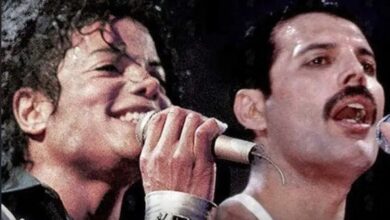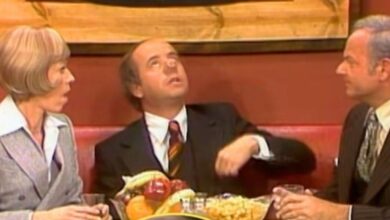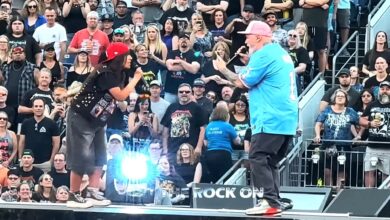When Metallica Brought Down the Iron Curtain: Moscow’s 1991 Monsters of Rock Revolution
Moscow in late September 1991 already felt like a pressure cooker before a single note rang out across Tushino Airfield. The Soviet Union was in freefall after the failed August coup, the old system cracking but not yet gone, and no one really knew what the future would look like. What they did know was that on this particular day, the future was going to be loud. Buses, trains, trucks, and overflowing Ladas poured toward a disused airfield on the edge of the city, carrying a generation that had grown up behind the Iron Curtain and was suddenly being told that, just maybe, the walls were coming down. For once, instead of political speeches and parades, the promise at the end of the journey was guitars, amplifiers, and freedom turned all the way up.
By mid-day, Tushino looked less like a concert venue and more like a human ocean. Estimates still vary wildly—official figures talked about around half a million people, while other accounts, fan memories, and later commentary push the number toward the mythic 1.6 million mark—but whatever the exact count, the visual is undeniable: a sea of bodies stretching to the horizon, packed together as far as cameras could capture. For kids who had only ever experienced rock music through smuggled tapes or late-night radio, the idea that Metallica, AC/DC, Pantera, The Black Crowes, and local heroes E.S.T. were all about to share a stage in Moscow felt surreal, like the West had suddenly materialized in their backyard.
The buildup to Metallica’s set was charged with a very particular kind of nervous energy. This was not just another date on a tour; it was one of the first truly massive, Western, open-air rock shows in Soviet history, and it came only weeks after tanks had rolled through the streets of the same city. Authorities knew crowds of this size could be volatile, and the memory of unrest was fresh. As a result, Tushino was crawling with soldiers in uniform, rows of military trucks, and lines of riot police positioned between the stage and the crowd. Overhead, helicopters swooped low in slow, menacing circles, supposedly to monitor the situation and deter trouble—but to many fans, they looked like something out of an apocalyptic music video.
The stage itself felt like a portal. Just months earlier, Metallica had released their self-titled “Black Album,” and songs like “Enter Sandman,” “Sad but True,” and “Nothing Else Matters” were already rewriting what mainstream heavy music could sound like. Now those same tracks were about to slam into a country where Western rock had long been treated as suspicious or subversive. The Monsters of Rock tour had already thundered across Europe that summer, but Moscow was different. The stakes were higher, the symbolism heavier, and even the band understood that they were stepping into something that was part concert, part political earthquake.
When the familiar Morricone intro, “The Ecstasy of Gold,” spilled from the PA, the crowd reacted like a dam bursting. Metallica had used that cinematic piece to open their shows for years, but at Tushino, with helicopters buzzing and soldiers trying to hold their lines, it felt like the overture to a riot. As the last orchestral notes faded and the band tore into the opening riff of “Enter Sandman,” the airfield erupted. James Hetfield strode to the front of the stage like a battle-hardened commander, guitar hanging low, hair whipping in the wind, barking out the lyrics as if he were daring the entire former Soviet system to try and shut him up.
In the pit closest to the stage, it was pure chaos—in the best and worst ways. Fans surged forward in massive waves, bodies colliding, arms thrown into the air, strangers hoisted on shoulders for a better view of their heroes. At times, the crowd’s motion was so intense that soldiers were sent barreling into the throng, batons out, trying to push people back. But something strange happened in that clash of authority and abandon: many of the same soldiers who were supposed to keep order ended up headbanging, grinning, and, in some cases, shedding their rigid posture to enjoy the music themselves. It was as if the power of the riffs was contagious, infecting everyone whether they wanted it or not.
From the stage, Metallica played like a band with everything to prove. The setlist leaned into the heaviest, most aggressive weapons in their arsenal—“Creeping Death,” “Harvester of Sorrow,” “For Whom the Bell Tolls,” “Fade to Black”—a collection of songs that already sounded massive in arenas but turned absolutely tectonic in the open air of Tushino. Every time Lars Ulrich pounded his kick drums, it felt like an artillery blast washing over the front rows. Kirk Hammett’s solos screamed through the sky, while Jason Newsted’s bass gnawed underneath the guitars, locking everything into a muscular groove. This wasn’t a polished TV performance or a cautious introduction to a new market; it was Metallica doing what they did best and trusting that Moscow could handle the full blast.
What made the day even more remarkable was that Metallica were not alone in pushing the decibel levels and the emotional limits. Earlier and later in the event, Pantera stomped onto the stage with their no-prisoners brand of groove metal, offering a different flavor of American heaviness to the stunned Russian audience. AC/DC, veterans of countless stadiums, showed up with their tried-and-true arsenal of riffs and anthems, topping the bill and bringing a more classic hard-rock swagger to the same field. The Black Crowes injected bluesy grit, and local band E.S.T. offered a homegrown perspective on loud guitars and rebellion. Together, the lineup made the day feel like a crash course in global rock culture delivered at warp speed.
Amid the noise and frenzy, there were surreal, almost cinematic moments that stuck in people’s memories. Fans in military uniforms pulling off their hats and jackets, tossing them into the crowd as if to shed their old identities for a few precious hours. People climbing light towers and scaffolding just to get a better glimpse of the stage. Helicopters dipping so close that dust and debris whipped across the field, adding an extra sense of unreality to what was already a historic day. Some footage even shows soldiers attempting to maintain order while clearly fighting the urge to grin and nod along to the music, betraying the fact that they, too, were fans at heart.
From a political and cultural standpoint, the concert’s timing could not have been more symbolic. The Soviet Union would officially dissolve only a few months later, but by September 1991, the ideological walls had already taken fatal damage. Western rock, once condemned as decadent or dangerous, was now blasting at ear-splitting volume on a sanctioned stage in the capital of the USSR. To many in the crowd, this was more than just entertainment; it was a visible, audible sign that the old rules were gone or at least on their way out. Metallica and their peers weren’t delivering speeches about democracy or policy, yet the sheer fact of their presence spoke volumes.
The show’s scale also rewrote the record books. Monsters of Rock events were already known for drawing huge audiences, but Moscow’s edition entered the realm of legend. Reports of 1.6 million people quickly became part of the lore, turning the concert into one of the largest rock gatherings of all time, even if historians continue to argue over the exact headcount. The truth, frozen in grainy video and aerial photographs, is that Tushino became a vast moving tapestry of humanity, packed so tightly that individuals blurred into a single living mass. In that context, even small moments—a crowd surfer carried like a wave, a banner raised above a cluster of fans—took on oversized emotional weight.
Decades later, the concert’s legacy has been preserved and mythologized through official releases and countless bootlegs. Performance footage from the day was included in the concert film “For Those About to Rock: Monsters in Moscow,” which captured not just Metallica but also the thunder of AC/DC and the ferocity of Pantera in the same setting. Snippets of Metallica’s set, like “Harvester of Sorrow” and “Creeping Death,” found their way onto singles and compilations, becoming prized artifacts for collectors. Meanwhile, fan-shot videos and photos continued to circulate, especially once the internet gave those memories a second life, ensuring that younger fans could experience at least a taste of that day.
What sets the Moscow 1991 performance apart from other legendary Metallica moments is how visibly it changed the relationship between band and audience. This wasn’t a carefully curated, VIP-heavy show with barricades and corporate branding; it was raw, imperfect, and at times barely under control. Hetfield’s banter between songs had a rough-edged warmth, encouraging the crowd to scream louder, move harder, and own the moment. The band seemed genuinely energized by the sheer size and intensity of the crowd, feeding off the chaos rather than shying away from it. You can almost feel them realizing in real time that they had crossed into a new tier of global influence.
For Russian fans, the emotional impact was just as lasting. Many who attended still talk about the concert as a defining personal memory, something that marked the end of one era and the beginning of another. In a country used to official state gatherings and scripted pageantry, the sight of hundreds of thousands of young people losing themselves in mosh pits, chants, and headbanging felt like an act of collective self-expression. Long after the amps were shut off and the crowd scattered back into the city, the feeling lingered that something irreversible had happened—that rock music was no longer a distant, smuggled fantasy, but a living, roaring force in their own backyard.
For Metallica as a band, Moscow became a milestone that confirmed their evolution from underground thrash heroes to global cultural phenomenon. The Black Album had already opened doors on radio and MTV, but seeing a vast, newly opened market respond with such explosive enthusiasm reinforced the idea that their music translated across borders, languages, and political systems. In the years that followed, they would continue to tour Eastern Europe and beyond, but Tushino remained the benchmark—a reminder that sometimes, the right band in the right place at the right time can help soundtrack history itself.
Even now, clips from that day still travel across social media feeds, pulling in new generations who weren’t even born when the concert happened. The grainy footage of “Enter Sandman” under the gray Moscow sky, the endless waves of fans, the soldiers trying and failing to stay stoic—all of it hits with a strange mix of nostalgia and awe. Viewers marvel not just at the size of the crowd, but at the intensity of the connection between the music and the moment. It’s one thing to read about political change in textbooks; it’s another to watch a million people screaming along to the same chorus as a superpower quietly unravels in the background.
In the grand story of rock history, the Monsters of Rock show at Tushino Airfield stands as one of those rare events where everything lines up: timing, talent, tension, and sheer volume. It is remembered not just because Metallica played a killer set—though they certainly did—but because the concert captured a society in mid-transformation, caught between past and future, fear and possibility. The music didn’t cause the revolution, but for a few deafening hours, it gave that revolution a soundtrack: grinding riffs, pounding drums, and a chorus of voices that refused to be quiet any longer.





